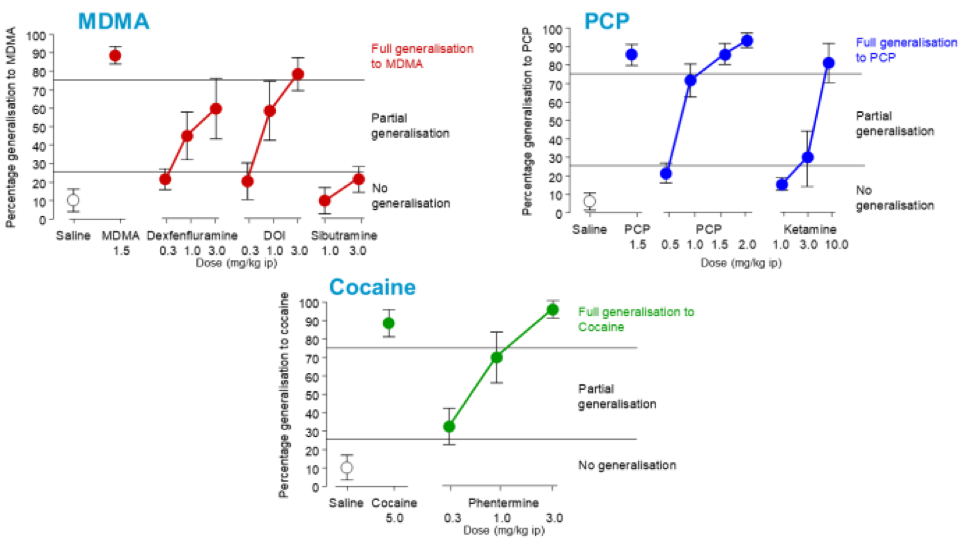Drug Discrimination
Drug Discrimination Testing
Rats can distinguish between the training drug and vehicle by detecting a pharmacologically specific interoceptive cue generated by most CNS drugs. To explore if new CNS-active compounds elicit comparable psychoactive effects, drug discrimination testing employs abused drugs as training cues. This testing, integral to the regulatory non-clinical abuse potential assessment, determines if test drugs evoke psychoactive effects akin to a reference drug, indicative of potential human response.
Drug discrimination can be established across a broad range of CNS active mechanisms:

A wide range of drug cues have been validated including:
- Stimulants
- Opioids
- CNS depressants
- NMDA antagonists
- MDMA and other entactogens
- Hallucinogens
- Benzodiazepines and non-benzodiazepine GABAergics
- Cannabinoids
